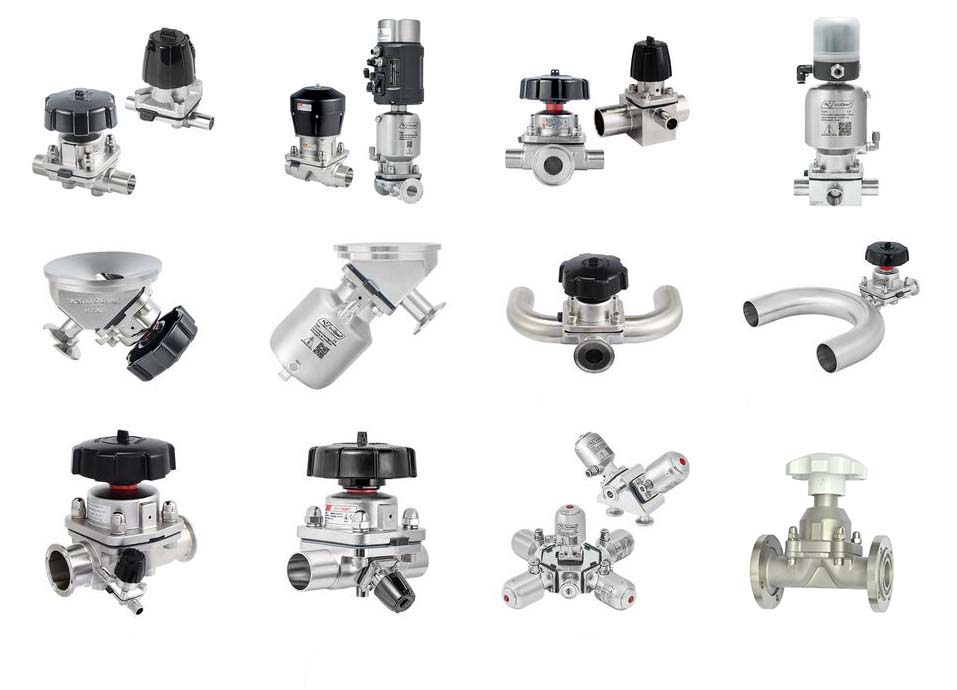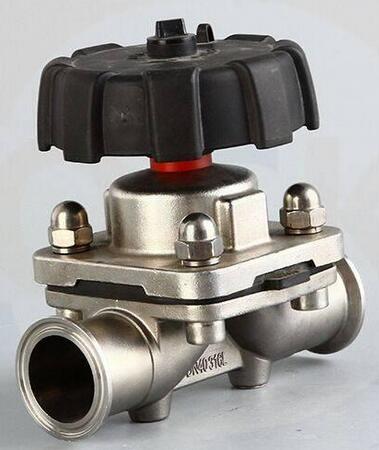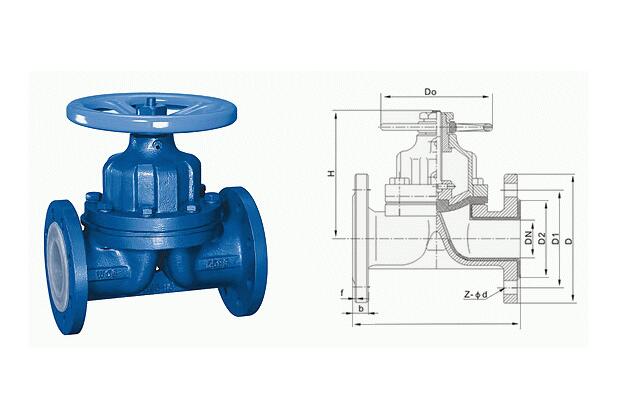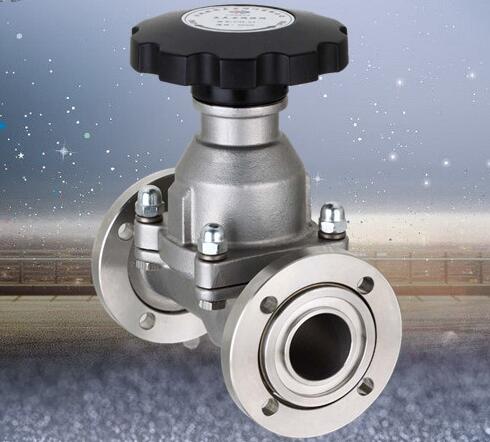วาล์วไดอะแฟรม เป็นวาล์วปิด-เปิดชนิดพิเศษที่ควบคุมการไหลของของไหลในท่อโดยใช้การเคลื่อนที่ของไดอะแฟรมบนก้านวาล์วเพื่อควบคุมการเปิดปิดของวาล์ว. ความแน่นของวาล์วเหล่านี้มีความโดดเด่นอย่างมาก, และการใช้งานมีหลากหลายเนื่องจากมีวัสดุไดอะแฟรมที่หลากหลายที่สามารถใช้ได้. มาดูวาล์วไดอะแฟรมประเภทต่างๆ และหน้าที่ของมันกันดีกว่า.

ฟาร์โปร diaphragm valve comes in different types, including the sanitary clamp diaphragm valve, lined diaphragm valve, and vacuum diaphragm valve. Each type is specially designed to meet specific industrial needs and offer exceptional performance.

Sanitary Clamp Diaphragm Valve
A Sanitary Clamp Diaphragm Valve is a type of diaphragm valve that is commonly used in the food, beverage, ยา, and biotech industries, as well as in other applications that require high levels of hygiene.
This valve is composed of two main parts: the valve body and the pneumatic actuator. The valve body is designed with a corrosion-resistant lining and diaphragm, and it features a throttling element for the resilient diaphragm. Because the valve body has no stuffing box structure and a smooth flow path, it has a small gravitational force, large flow, and no external leakage, which makes it convenient and reliable.
นอกจากนี้, the valve is fire and explosion-proof, and it is suitable for use with strong acid, strong alkali, การกัดกร่อนที่แข็งแกร่ง, high viscosity, grain-containing, fiber-containing, toxic, and non-polluting media. โดยรวม, the Sanitary Clamp Diaphragm Valve is an important component in automated industrial systems that require precise control of fluid flow in hygienic environments.
Lined Diaphragm Valve

A lined diaphragm valve is a type of valve that combines the functionality of a diaphragm valve with strong anti-corrosion properties. Its opening and closing parts are made of a steel valve flap and a soft material diaphragm, while the valve body cavity and valve cover cavity are separated to achieve the purpose of cutting off the medium in the tube.
This design allows the valve to effectively control the flow of corrosive media, making it highly suitable for use in the petrochemical, power chemical, อาหาร, paper, steel, การทำเหมืองแร่, dispensing, and water treatment industries.
The lined diaphragm valve can be operated manually, electrically, pneumatically, or in combination with a diaphragm valve. It has a pressure rating of up to 200psi and can withstand temperatures up to 340℉. With its strong anti-corrosion properties and flexible operating options, the lined diaphragm valve is a versatile and reliable choice for controlling fluid flow in various industries.
Vacuum Diaphragm Valve

A vacuum diaphragm valve is a type of diaphragm valve that is designed to function in vacuum environments. It is commonly used in industries that require precise control over the flow of gases or fluids in a vacuum, เช่น semiconductor manufacturing, space exploration, and scientific research.
The valve is made up of a valve body, a diaphragm, a stem, and an actuator. The valve body is typically made of stainless steel and is designed to withstand the high vacuum pressures. The diaphragm is made of a flexible material such as rubber or elastomer and is used to seal the valve and prevent any leakage of the vacuum.
The stem is connected to the diaphragm and extends through the actuator, which is used to control the position of the stem and thus the diaphragm. The actuator can be manual, pneumatic or electric, and is used to control the flow of gases or fluids through the valve.
Vacuum diaphragm valves can come in various designs, including flange, threaded or welded configurations, depending on the application. The valve can also be designed to operate with a range of different gases and fluids, making it a versatile choice for many different industries.
The working medium for this valve is air and non-corrosive gas, making it an ideal choice for various industries such as dairy products, wine, biological engineering, อาหาร, ยา, beverages, cosmetics, และสารเคมี.
โดยรวม, the vacuum diaphragm valve is a critical component in many vacuum systems, providing precise control and reliable operation to ensure the integrity and quality of the vacuum environment.
